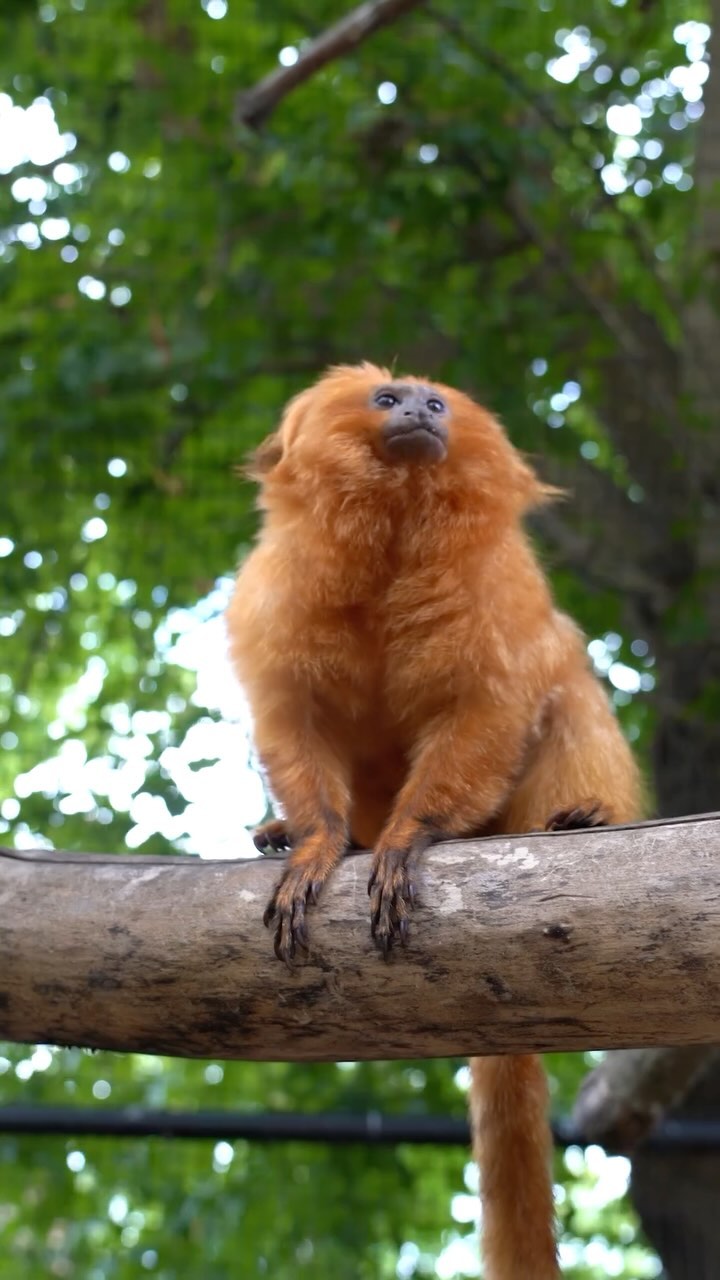- Introduction to the Golden Lion Tamarin (GLT)
- Vocalizations and Communication
- Conservation Challenges and Efforts
- Role of Zoos in GLT Conservation
- Citizen Science and Everyday Contributions
The Golden Lion Tamarin (GLT) is a diminutive, brilliantly-colored primate native to the coastal forests of Brazil, particularly the Atlantic Forest. Known for its striking golden-orange mane that encircles its face, the GLT is a symbol of wildlife conservation and the efforts required to save endangered species. Weighing only around 620 grams (1.4 pounds) and measuring about 26 centimeters (10 inches), they are one of the most visually distinct primates.
Golden Lion Tamarins (GLTs) are small monkeys, roughly the size of a squirrel, that belong to the family Callitrichidae. They exhibit fascinating behavior and a unique ecology. Despite their size, GLTs play a crucial role in their ecosystem, aiding in seed dispersal and maintaining the health of their forest habitat.
Vocalizations and Communication
One of the most intriguing aspects of GLTs is their complex vocal communication system. These primates use a variety of calls, whistles, and trills that can be easily mistaken for bird songs. Their vocalizations serve multiple purposes, from signaling an individual’s presence to coordinating movements and social interactions within their group.
For instance, GLTs emit long calls reverberating through the forest to keep the troops together and deter predators. These calls can carry over considerable distances, ensuring that members of the group maintain contact even when foraging over a large area. This form of acoustic communication is crucial for their social structure and survival in their dense forest habitat.
Moreover, newly born GLTs learn these vocalizations from their parents and other group members through a sophisticated learning process. This cultural transmission of calls highlights these primates’ intelligence and social complexity.
Conservation Challenges and Efforts
GLTs face several conservation challenges primarily due to habitat loss, fragmentation, and illegal pet trade. The Atlantic Forest, their native habitat, has been reduced to a small fraction of its original size due to urbanization, agriculture, and logging. This habitat fragmentation isolates GLT populations, reducing genetic diversity and increasing the risk of inbreeding.
Efforts to conserve GLTs have been multifaceted, involving habitat restoration, translocations, and stringent protection laws. One key initiative has been the creation of biological corridors. These corridors connect isolated forest fragments, allowing GLTs and other wildlife to move between them safely, thereby increasing genetic exchange and decreasing the risks associated with small, inbred populations.
Collaborative efforts between local governments, non-governmental organizations, and international bodies have also established protected areas and reserves specifically for GLTs. These protected zones provide a safe haven for the tamarins and other endangered species.
Role of Zoos in GLT Conservation
Zoos globally have played a pivotal role in the conservation of golden lion tamarins. By participating in breeding programs, zoos have not only increased GLT populations but also served as educational platforms to raise awareness about the species and its plight.
Zoo breeding programs are carefully managed to maintain the genetic diversity of captive populations. This is essential for the long-term survival of the species, as it helps mitigate the risks posed by diseases and environmental changes. Additionally, zoos engage in ‘soft release’ programs, where tamarins are bred in captivity and gradually acclimatized to the wild before being released.
Educational campaigns and interactive exhibits at zoos also foster a deeper understanding and appreciation of GLTs. Through these initiatives, zoos inspire the public to support conservation efforts and adopt more sustainable lifestyles that can indirectly benefit wildlife.
Citizen Science and Everyday Contributions
Citizen science projects have emerged as powerful tools in the conservation of golden lion tamarins. These initiatives involve public participation in data collection and monitoring, providing valuable insights that professional scientists might not gather alone. For instance, volunteers can help track GLT sightings, monitor habitat conditions, and record behavioral observations.
Everyday actions can also significantly impact GLT conservation. Simple changes such as reducing paper consumption, supporting sustainable agriculture, and promoting the use of certified wood products can help preserve the Atlantic Forest. Public awareness campaigns often emphasize these small yet impactful lifestyle adjustments that collectively contribute to habitat conservation.
Visiting wildlife centers and participating in tours or talks about GLTs can further educate individuals on the importance of conservation. Engaging with these efforts not only supports the cause financially but also spreads the message more broadly, encouraging others to participate.
In conclusion, the Golden Lion Tamarin is a compelling example of how intricate and interdependent our natural world is. From their bird-like calls that echo through Brazil’s coastal forests to the coordinated conservation efforts aimed at their survival, every aspect of GLTs emphasizes the need for continued dedication to preserving our planet’s biodiversity. Their survival is a testament to the power of collective effort, from professional scientists to everyday citizens, all contributing to the remarkable story of the Golden Lion Tamarin.
*****
Source Description
It’s a bird, it’s a plane, no, it’s a Golden Lion Tamarin! 🐒 🦁
The bird-like vocalizations that GLTs make are used to signal an individual’s presence and communicate between members of their group. Visit our Welcome Center to learn how you can protect these critically endangered species through citizen science efforts and easy, everyday life changes.


